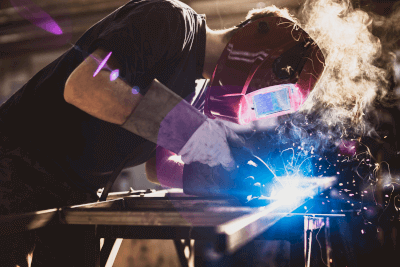What Is MAG Welding?

Metal active gas (MAG) welding is an arc welding method that uses high heat generated by arc discharge to weld metal components. In this gas-shielded arc welding process, active gases like pure carbon dioxide, carbon dioxide-argon mixtures, or those mixed with oxygen are used as shield gas to protect the welding area from atmospheric oxygen, which can cause oxidation and brittleness.
Uses of MAG Welding
Commonly used in the automotive industry, construction sites, and heavy industries, MAG welding is versatile for welding ferrous materials. By adjusting the carbon dioxide ratio in the shield gas, weld penetration and appearance can be controlled, making it a preferred method in various manufacturing settings. Although not suitable for materials sensitive to chemical changes, like non-ferrous metals, MAG welding’s concentrated arc formation provides strong welds. Its cost-effectiveness with active gases also makes it a practical choice for large-volume welding.
Principles of MAG Welding
MAG welding operates on three main principles:
1. Arc Discharge
A high voltage between the electrode and metal component generates an arc discharge, creating temperatures between 5,000 to 20,000 degrees for welding.
2. Shield Gas
Active gases blown during welding block air contact, concentrate the arc, and generate necessary oxides in the molten part, preventing arc wandering.
3. Welding Wire
Wire-shaped electrodes, either solid or flux-cored, are used and continuously fed during welding. Flux-cored wire, although more costly and producing more slag, can speed up the welding process.
Other Information on MAG Welding
Advantages and Disadvantages of MAG Welding
- Advantages: High efficiency with rapid melting speed, suitability for automated welding, strong welds due to deep penetration, and reduced spattering compared to carbon dioxide welding.
- Disadvantages: Need for ventilation due to carbon monoxide generation and precautions like windbreaks for outdoor use due to gas utilization.